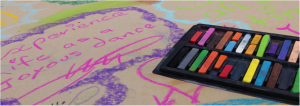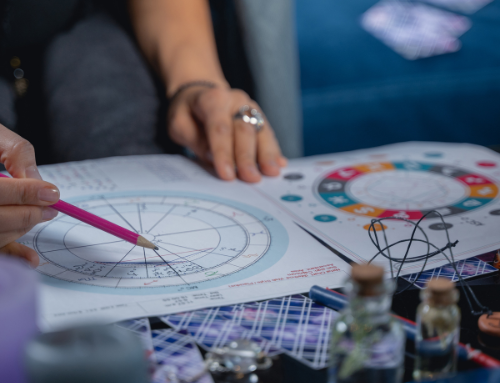What is Transpersonal Art Therapy?
“Art can be said to be –and can be used as – the externalized map of our interior self.”
Peter London, No More Secondhand Art.

Transpersonal Art Therapy uses a holistic approach by dealing with the whole person and recognises each person as different by taking in to account their psychological, social, cultural, biological, ecological and spiritual backgrounds. Incorporated with ‘person centered’ counselling which focuses on the person and not the illness and uses an approach to promote an emotional, physical and spiritual wellbeing.
It is a way of mapping externally our internal landscape and to explore our own personal imagery. No artist talent required, just allow creativity to flow through your fingertips. Going within to take a journey outwards beyond your conscious thinking to a state of deeper relaxation to access your higher consciousness. Allowing you to release what may be hidden within the subconscious and bring up to the conscious level through your art. The art created may be used to facilitate new understandings, insight and healing into past and present traumas, crises and unresolved issues.
Benefits
Children through to the elderly can participate in an art therapy session, it can benefit those treated for or suffering from:
– Depression
– Progressive or degenerative illness
– Palliative care
– Grief and loss
– Behavioural issues
– Stress
– Trauma
Plus many more………
Art Therapy can help in many areas of your life:
– Self esteem
– Emotional release
– Focus and concentration
– Verbal or non-verbal communication and expression
– Life transitions
The client can express and explore themselves in a safe and nurturing environment using a range of different techniques and materials:
– Music
– Movement
– Role playing
– Relaxation
– Guided imagery
– Visualisation
– Play dough/Clay
– Material
– Collage
– Colour – paints, pencils, oil pastels.
– Masks
– Mandala
– Dreams
– Fairy tales & myths
Often having difficulties with physical mobility and mental awareness, the elderly like us all retain their feelings and emotions, this can lead to anxiety, frustration and sadness even though sometimes they may not fully comprehend.
“Expression through these therapies is powerful because it assures us that significance, meaning and beauty can emerge from pain, confusion and trauma.”[1] Through reflection and learning to dialogue with the art work, art therapy focuses on the creative process rather than the end product and it is an opportunity for people to explore and express life issues such as grief, depression and anxiety in a creative, safe and nurturing environment.
Diane Collett
Angelic Presence
0407 790 457
[1] Pg16. Healing Arts Therapies and Person-Centered Dementia Care. Edited by Anthe Innes, Karen Hatfield






Leave A Comment